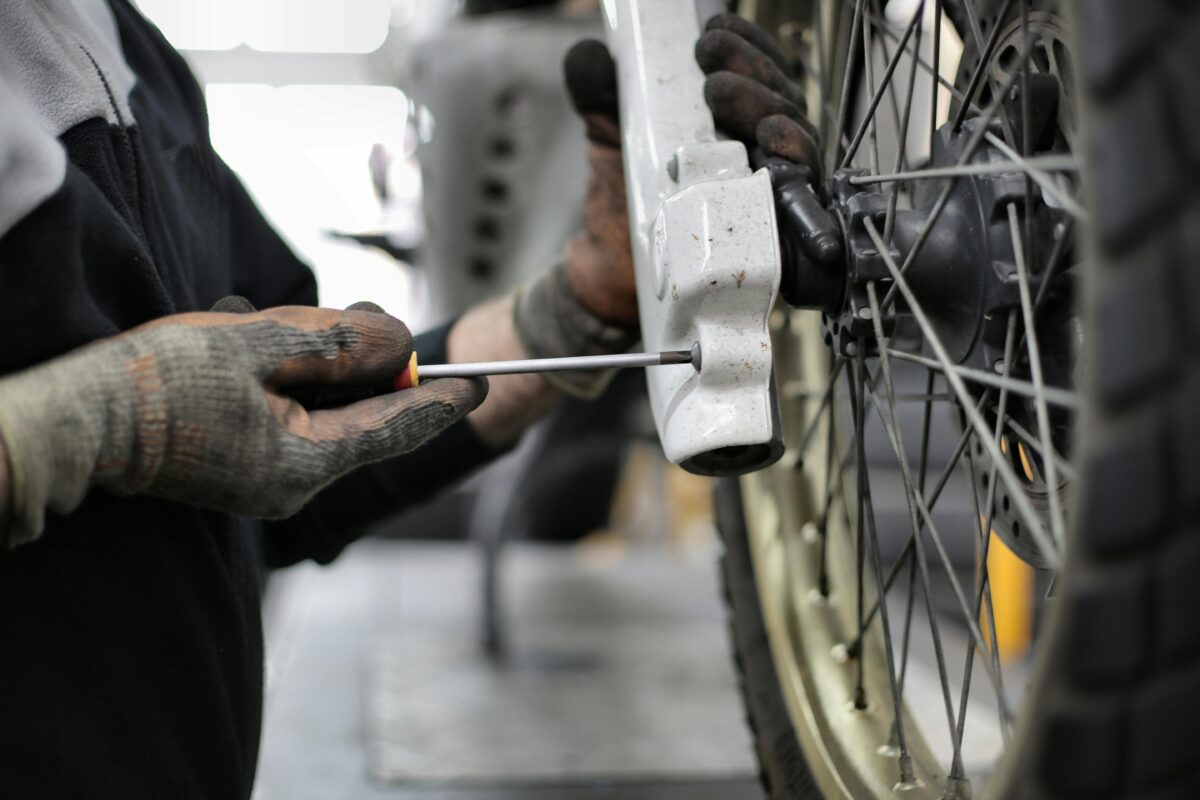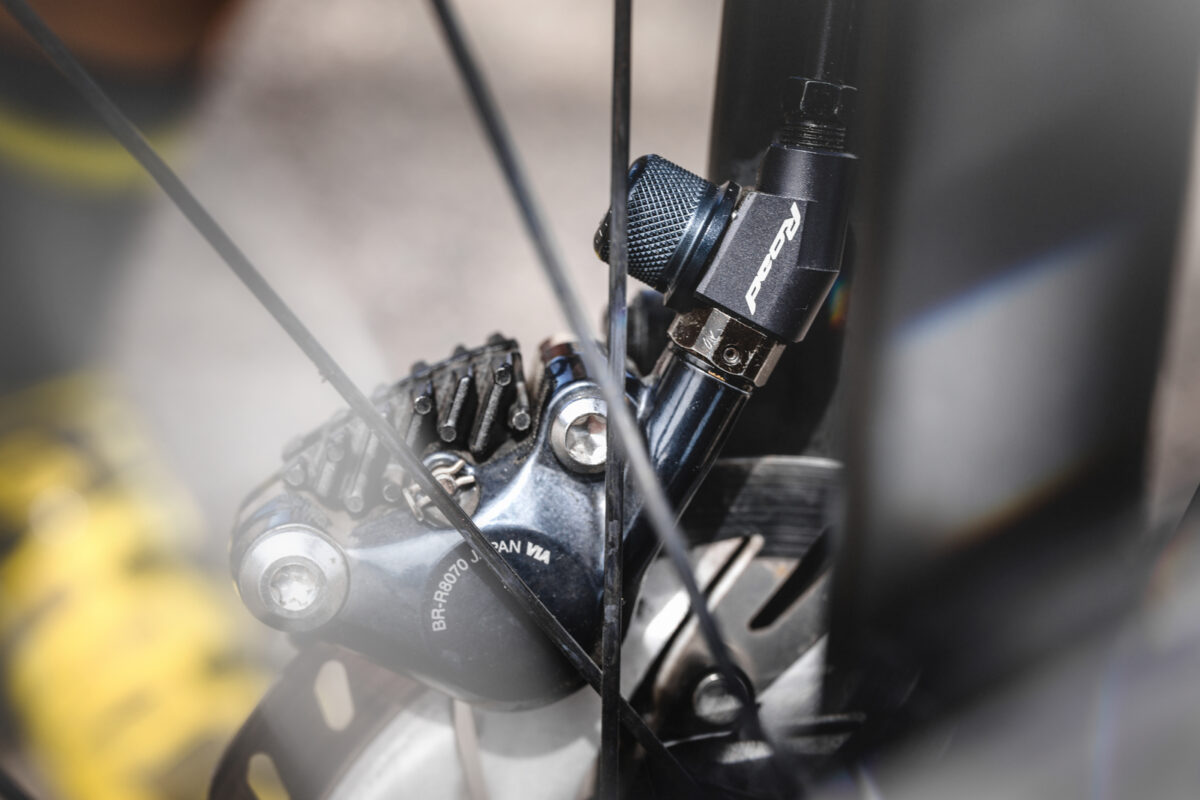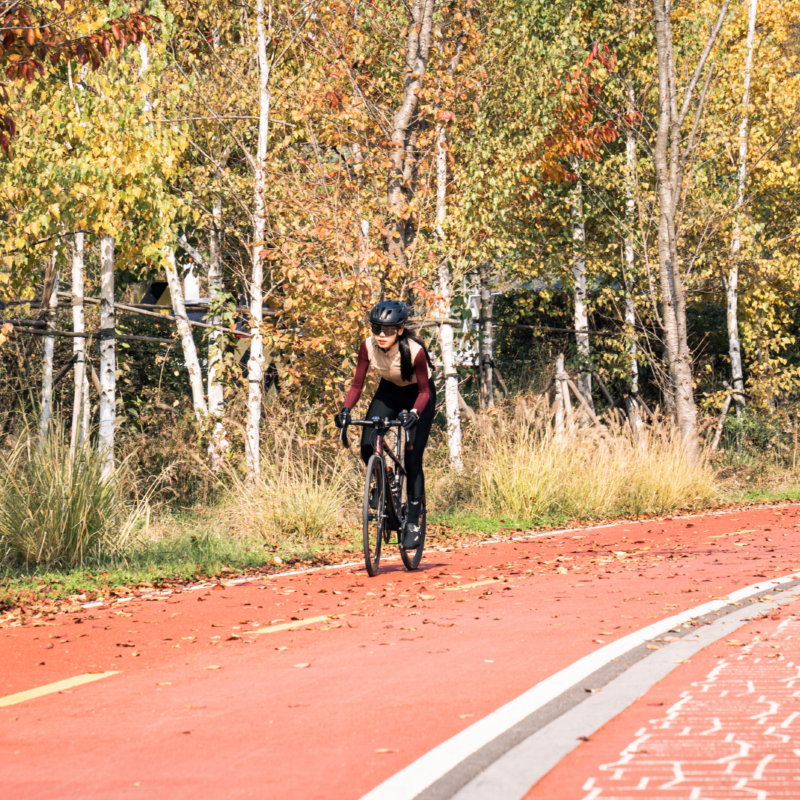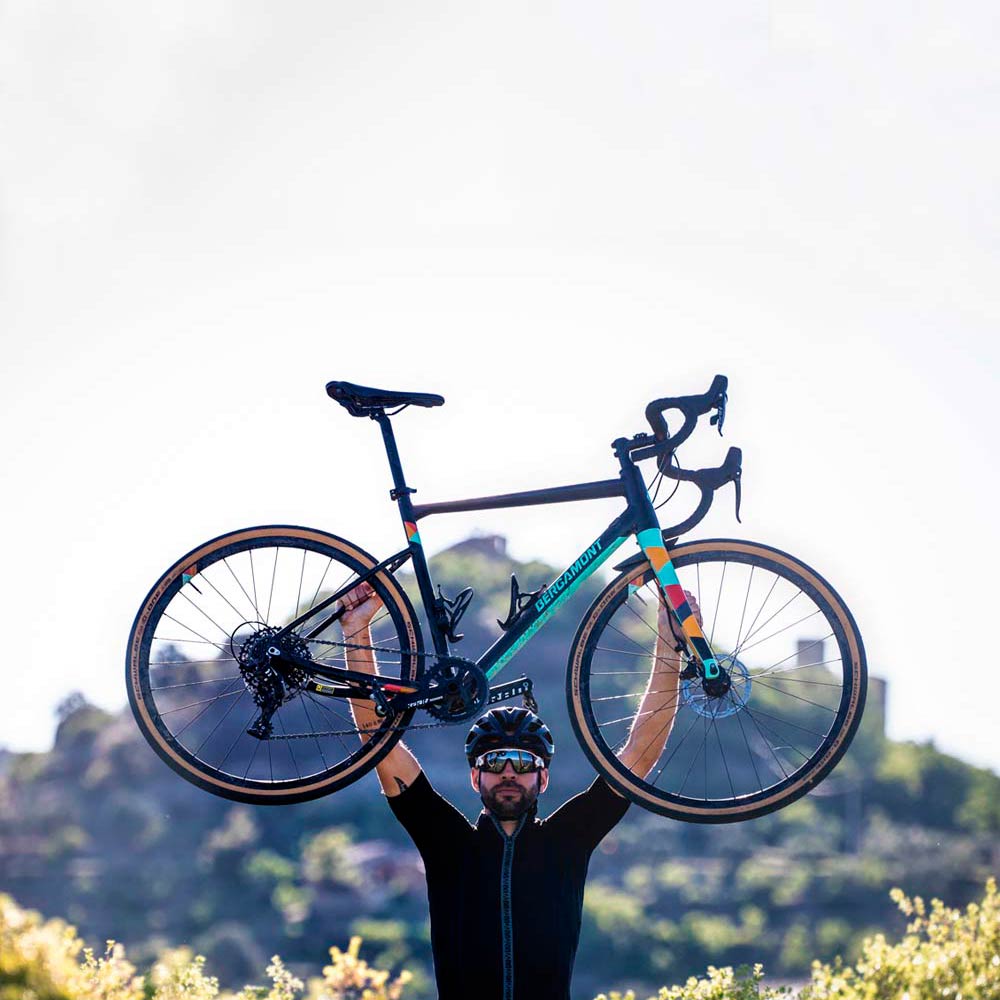TIPS
How to get your BIKE READY for SUMMER
Summer has arrived, bringing with it the desire to hit the roads and trails on your bike. But before you go, it’s essential to ensure your bike is in perfect condition, especially if it has been inactive during the winter. You might be wondering where to start and what to check before summer riding. Here’s a complete guide to getting your bicycle ready for summer with PRO tips and tricks for cleaning and checking your bike to make it road-ready.

1. Thorough Cleaning
A good general cleaning is the first step to preparing your bike for summer. After a period of inactivity, start with a thorough cleaning. Use a bike-specific cleaner and brushes of different sizes to reach all the corners. Dirt buildup can affect the performance of components like the chain, brakes, and derailleur. For cleaning, it’s best to use a biodegradable degreaser, which is environmentally friendly and effective at removing accumulated grease. Don’t forget to use warm water to help remove stubborn dirt.
Lubrication
After cleaning, dry the bike thoroughly and apply lubricant to the chain and other moving parts. In summer, it’s recommended to use wax-based lubricants, which are more effective in dry, dusty conditions. The wax forms a film that repels dust and dirt, keeping the chain cleaner for longer. Apply the lubricant by turning the pedals backward, ensuring each link is well covered. Let the lubricant sit for a few minutes, then wipe off the excess with a clean cloth to prevent dirt buildup.
2. Tire Check
Tires pressure
Ensure the tires are inflated to the correct pressure. In summer, higher pressure is ideal for riding on dry, hard roads. Check the manufacturer’s recommended pressure, usually indicated on the tire sidewall. Use a pressure gauge to check and adjust the pressure as needed. Proper pressure not only improves performance but also reduces the risk of punctures and extends tire life.
Wear and Tear
Inspect the tires for signs of wear, cuts, or punctures. If you find any significant damage, replace them. Worn tires have less grip and can be dangerous, especially on curves and uneven terrain. It’s a good idea to always carry a spare tube and a set of tire levers on your rides.
Solid Tires:
If you don’t want to worry about tire maintenance, you can opt for solid tires from brands like Tannus Tires. These tires are airless and always ready to use, eliminating the risk of punctures and the need for constant inflation and maintenance. Although they can be slightly heavier than conventional tires, they offer excellent durability and allow you to ride worry-free.
3. Brake System
This is one of the most important points to check, as it is the main safety element of your bicycle. You must make extra sure that they are correctly and optimally functioning after months of inactivity
Disc Brakes
Check the discs and pads. If the pads are worn, replace them. Also, clean the discs with a brake cleaner to prevent squealing and improve braking. Make sure the discs are not bent or damaged, as this can affect braking efficiency. If you find any problems, go to a specialized workshop for a professional adjustment. If you want to improve your braking precision, you can use a brake power booster such as OutBraker’s, which offers more power and control when braking.
Rim Brakes
Ensure the brake pads are not worn and are properly aligned with the rim. Make sure the cables are not rusty or frayed. If the brakes are not responding well, you may need to adjust the cable tension or replace it. Proper brake maintenance is essential for your safety on the road.

4. Drivetrain
Chain
The chain is crucial for your bike’s performance. Besides cleaning and lubricating it, measure its wear with a chain wear gauge. If it’s stretched, it’s time to replace it to avoid damaging the cogs and chainrings. A well-maintained chain ensures smooth and precise shifting and reduces wear on other drivetrain components.
Derailleurs and Shifters
Adjust the front and rear derailleurs. If the gears are not shifting smoothly, you may need to adjust the limit screws and cable tension. Clean and lubricate the derailleur joints to ensure smooth movement. Properly adjusted gears are key to efficient and trouble-free riding.
5. Pedals and Bottom Bracket
Pedals
Ensure the pedals spin smoothly without noise. Grease the pedal threads and, if you use clipless pedals, clean and lubricate the springs. Ensure the pedals are tightly secured to avoid unwanted movement during your ride.
Bottom Bracket
If you hear noises when pedaling, you may need to disassemble and lubricate the bottom bracket. In some cases, it’s necessary to visit a specialized shop for this task. A well-maintained bottom bracket is essential for efficient power transfer and smooth riding.
6. Wheels
Spokes and Rim
Ensure the spokes are properly tensioned and the rim is free of dents or cracks. Loose spokes can cause the wheel to wobble, affecting handling and potentially causing accidents. If you find any broken or loose spokes, adjust or replace them immediately.
Bearings
Make sure the hub bearings spin smoothly. If you notice resistance or noise, disassemble, clean, and regrease them. Well-maintained bearings reduce friction and improve pedaling efficiency. If you lack experience in bearing maintenance, it’s best to visit a professional.
7. Fine Adjustments and Final Check
Check and tighten all bolts and screws on the bike. Pay special attention to the stem, handlebars, saddle, and brakes. A loose bolt can cause accidents or long-term damage. Use a torque wrench to ensure you don’t overtighten the bolts, especially on carbon components.
Saddle and Handlebar Adjustment: Ensure the saddle is at the correct height and properly aligned. The saddle height should allow you to pedal with a slight bend in your knee when the pedal is at its lowest point. Do the same for the handlebars; a correct position will help you avoid pain and improve bike control. Adjust the height and angle of the handlebars to find the most comfortable and efficient position.

8. Additional Equipment
Water Bottles and Hydration: In summer, hydration is key. Always carry one or two water bottles and consider using a hydration backpack for longer rides. Dehydration can affect your performance and risk your health. Drink water regularly during your ride and don’t wait until you’re thirsty to hydrate.
Reflectors and Lights: Even though the days are longer, it’s always good to carry reflectors and lights. Ensure the front and rear lights are charged and working properly. Visibility is crucial for your safety, especially at dawn and dusk or in low-light conditions. Also, wear bright or reflective clothing to be more visible to other road users.
Repair Kit: Don’t forget to carry a mini repair kit with patches, a spare tube, tire levers, and a pump. It’s also useful to carry a multi-tool for quick adjustments. This kit will allow you to fix most mechanical issues you might encounter during your ride, preventing you from being stranded.
9. Advanced PRO Tips
Adjust the suspension
If your bike has front or rear suspension, ensure it’s properly adjusted to your weight and riding style. Check the air pressure and oil level in the suspension. Regular maintenance of the suspension improves comfort and control on rough terrain. If you notice the suspension isn’t working correctly, it’s best to take the bike to a specialized shop for a full inspection.
Training and Planning
Besides the bike, prepare yourself. Plan your routes considering distance, elevation, and weather conditions. Your rutes may not be the same in the heat of the summer. Keep in mind that if you haven’t been out much during the winter, your body may not be at the same point as your desire to ride. Your body also has to prepare itself physically, even more so with the high temperatures of summer. Being in good physical condition will help you enjoy your rides more and reduce the risk of injury. You won’t want to stretch yourself the first day you ride. Also, always carry a map or GPS and plan your routes in advance to avoid unpleasant surprises.
With your bike ready, enjoy your summer rides!
Preparing your bike for summer is essential to make the most of your rides. By following these steps, you’ll not only improve your bike’s performance but also ensure your safety on each route. Remember, good inspection and maintenance can make the difference between a successful ride and an issue on the road.
From thorough cleaning to precise adjustments of each component, every detail counts. And don’t forget to carry the necessary equipment to resolve any unforeseen events. So, take care of your bike, inspect it thoroughly, and enjoy the great weather on two wheels. Happy summer and happy riding!

